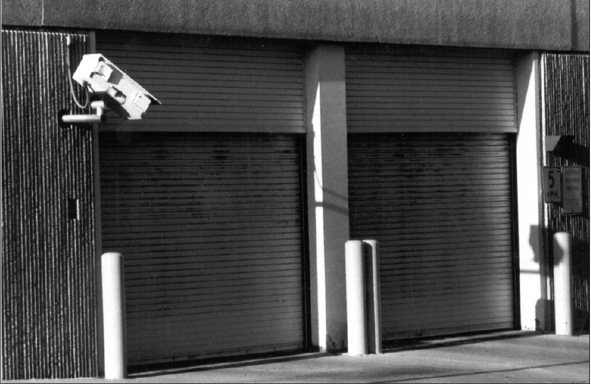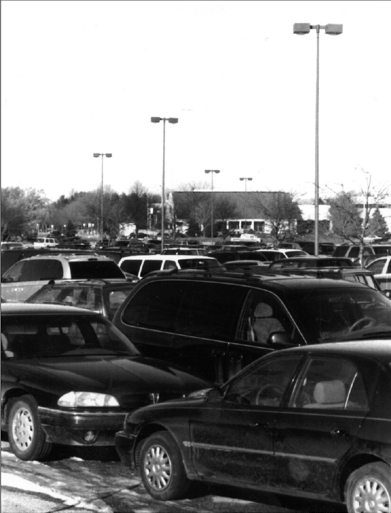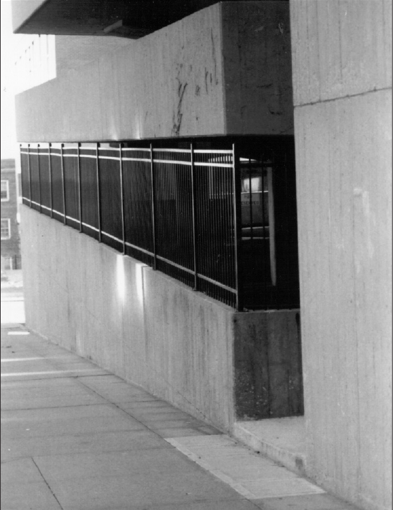Responses to the Problem of Thefts of and From Cars in Parking Facilities
Your analysis of your local problem should give you a better understanding of the factors contributing to it. Once you have analyzed your local problem and established a baseline for measuring effectiveness, you should consider possible responses to address the problem.
The following response strategies provide a foundation of ideas for addressing your particular problem. These strategies are drawn from a variety of studies and police reports. Several of these strategies may apply to your community's problem. It is critical that you tailor responses to local circumstances, and that you can justify each response based on reliable analysis. In most cases, an effective strategy will involve implementing several different responses. Law enforcement responses alone are seldom effective in reducing or solving the problem. Do not limit yourself to considering what police can do: give careful consideration to who else in your community shares responsibility for the problem and can help police better respond to it.
Many evaluated initiatives to prevent car theft have focused on vehicle design. While important, this work is of little immediate relevance to police officers dealing with a local problem of theft in parking facilities. Similarly, programs to deal with a regional problem of theft, such as tightening up border crossings, cracking down on chop shops or establishing "Vehicle Watch,"§ might have only a small impact on a local problem of theft from parking facilities. Consequently, initiatives to deal with car theft at a national or regional level are not reviewed here. Instead, the focus is largely on ways to improve security, specifically in parking facilities. Unfortunately, there is little research to draw upon, and most of this has been undertaken in countries other than the United States. However, the research reviewed above on contributory factors suggests that any measures that (1) improve surveillance and (2) reduce illegal access are likely to reduce thefts. These measures can often be quite simple, such as pruning bushes or blocking gaps in fencing. Identifying them is often a matter of common sense or basic security practice. In other cases, a survey undertaken by officers trained in crime prevention through environmental design (CPTED) may be needed.12
§ "Vehicle Watch" is a program (of unknown effectiveness) in which people give the police permission to stop their cars at night. Program participation is signaled by a vehicle decal. Click here for a description of the program.
Your analysis of the problem is also likely to identify the need for security measures that could be expensive. In most cases, the cost of these measures will have to be borne by the facility owners or operators, who can be expected to resist the suggestions. In making your case for such measures, you may have to spend considerable time explaining why the police and the courts alone cannot solve the problem. You may also need to do the following:
- Calculate the likely cost of measures, such as improving fencing or hiring attendants, relative to facility profits.
- Convince facility owners that they can recover the cost of increased security through raised parking fees.
- Enlist the support of local business organizations to persuade facility owners to improve security.
- Enlist the help of city government to (1) secure tax breaks for parking operators who make improvements, or (2) pass ordinances that define security standards to be met by parking operators.
- Consider using abatement procedures to require change.
- Brief the local media on the problem, and seek their support for the proposed solutions.
Recommended Responses
1. Hiring parking attendants. The largest study of theft in parking facilities concluded that the most important preventive factor was the presence of attendants.13 The study covered more than 50 large parking facilities in London. Whether surface lots, Parking decks or underground garages, facilities with attendants had the lowest theft rates. The lowest rates of all were in garages where the attendants parked the cars. The presence of attendants had a smaller effect on theft from cars, probably because their main function is to collect parking fees, and they may not often leave their booths.§ In both cases, other security improvements were made at the same time.
2. Improving surveillance at deck and lot entrances/ exits. Surveillance of entrances and exits can be improved in ways other than hiring attendants. A successful effort to reduce thefts from a parking deck in Dover, England, involved leasing a vacant office at the entrance to a 24-hour taxi service, and improving the entrance lighting.14 Both measures increased natural surveillance at the entrance.- A well-publicized bike patrol provided by a private security company in a large park-and-ride lot in suburban Vancouver, British Columbia, led to a substantial drop in theft of cars.16
- In the Lloyd district of Portland, Oregon, a concerted effort to reduce thefts from cars resulted in a drop from about 900 per year to about 300 per year. The centerpiece of this effort was to coordinate the patrols conducted by the diverse security firms hired by individual lots and decks.§
- A six-city survey of parking facilities, many of which had new CCTV systems, concluded CCTV was effective in reducing theft, though its impact was difficult to separate from that of other measures in place.17
- Following the introduction of CCTV, theft from cars (but not of cars) was reduced dramatically in four parking lots at a southern England university campus. The cameras covered only three of the lots, but thefts dropped equally in the fourth, suggesting that potential offenders were unaware of the extent of the cameras' surveillance.18
- The introduction of CCTV in parking facilities in a southern England town led to a drop in car-related thefts, but this may have been equally due to the improved lighting and overnight locking of facilities introduced at the same time.19

CCTV monitors cars entering and leaving this garage. Credit: Kip Kellogg
CCTV systems vary greatly in their specifications, coverage and quality. They may or may not be linked to public address systems, and the amount of attention guards or attendants give them varies. If new CCTV systems are to be effective, they must be carefully designed to suit the particular facilities and their use. They should be advertised to increase their deterrent effect, but dummy cameras should not be used. These can give facility users a false sense of security, and they open the way to crime-victim lawsuits against facility operators.
5. Improving the lighting. Poor lighting has been identified as a risk factor in thefts from parking facilities, and many improvement schemes include better lighting. Improved lighting has been found to reduce crime in other settings,20 and though there is a lack of research, there is little doubt it can help to do the same in parking facilities—particularly in decks and underground garages, and in lots with evening or night use.21
Tall lights provide uniform coverage of a lot and are difficult to vandalize. Credit: Kip Kellogg

Unfenced lots are vulnerable to theft.
- In Port Newark, New Jersey, offenders stole new cars parked in a storage facility by driving one through the cyclone fence, and then driving others through the hole created. A two-foot-high concrete barrier erected around the fence stopped these thefts.22
- At Newark International Airport, juvenile offenders were stealing subcompact cars from a lot by driving them through a small gap between two steel posts. A sand-and-concrete trash basket sealed the gap. Further checks revealed numerous other large gaps, which were then filled with steel posts or concrete barriers. These measures helped to reduce thefts from 100 one year to 37 the next.23
- One measure taken to reduce theft from a Dover, England, Parking decks was to install wire mesh in the gaps above the wall surrounding the deck. This prevented youths from climbing into the deck.24

Use of mesh or grills to block gaps between decks helps to reduce unauthorized access. Credit: Kip Kellogg
7. Installing entrance barriers and electronic access. To deter thieves from cruising parking lots in cars, facility operators in Portland's Lloyd district agreed to install barriers at the entrance and exit of each lot. Though hard evidence is not available, these barriers are believed to have reduced theft.25 No evaluations of electronic access systems to public parking facilities have been published, but such systems have been found effective in preventing theft from parking areas in housing complexes.26
§ Even the "knee-capping" (i.e., shooting in the leg) meted out by the IRA to juvenile car thieves in Northern Ireland failed to have any impact on the volume of car thefts (reported in Clarke and Harris 1992).
However, one important study found that the arrest of a handful of persistent offenders led to a marked drop in thefts in a shipyard parking lot in Newport News, Virginia31 Similar results might be achieved elsewhere, especially in jurisdictions with a community prosecution unit and where judges are alert to business owners' concerns about the economic impact of these crimes.Responses With Limited Effectiveness
10. Conducting lock-your-car campaigns. Victims often contribute to their plight by leaving valuables in view or placing items in known hiding spots, such as under the front seat or in the glove box. They sometimes leave spare keys in magnetic containers placed in the wheel well. They may leave doors unlocked, leave windows open and even leave keys in the ignition.These habits help explain the popularity of lock-your-car campaigns, but evaluations of such campaigns, some targeted on parking facilities, have failed to identify any clear crime prevention benefits. Checks made of cars before and after publicity campaigns show little change in the number of cars properly secured.32 Results may be better when campaigns are part of a wider program of security improvements. Thus, a combination of a publicity campaign with mounted patrols and environmental changes to improve natural surveillance achieved a significant reduction in thefts from cars in parking lots in Stockholm, Sweden.33 Campaigns may also be useful in raising consciousness about the problem, making it easier to introduce more costly measures.
Some jurisdictions have made it an offense to leave parked cars unlocked. Prosecutions are extremely rare, and this measure probably has no more than symbolic value.
11. Warning offenders. A publicity campaign warning potential offenders about intensified police patrols had no effect on theft of and from cars parked in the streets of Jersey City, New Jersey34 No studies of similar campaigns for parking facilities have been published, but there is no reason to think they would be any more effective.13. Using decoy vehicles. Police occasionally use decoy vehicles (sometimes also known as "bait cars" or "gotcha cars") to catch car thieves. These are sometimes fitted with immobilizers and devices to trap the thieves inside the car.35 Their use greatly appeals to the police and the public. Decoy vehicles can be used in parking facilities. They must be kept under constant surveillance, and it is unclear whether they yield more arrests than surveillance alone.
Free Bound Copies of the Problem Guides
You may order free bound copies in any of three ways:
Online: Department of Justice COPS Response Center
Email: askCopsRC@usdoj.gov
Phone: 800-421-6770 or 202-307-1480
Allow several days for delivery.
Email sent. Thank you.
Thefts of and from Cars in Parking Facilities
Send an e-mail with a link to this guide.
* required
Error sending email. Please review your enteries below.
- To *
Separate multiple addresses with commas (,)
- Your Name *
- Your E-mail *
Copy me
- Note: (200 character limit; no HTML)
Please limit your note to 200 characters.
